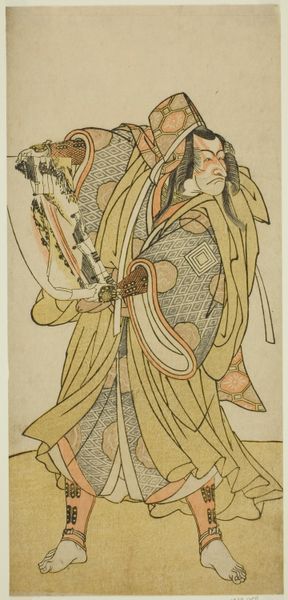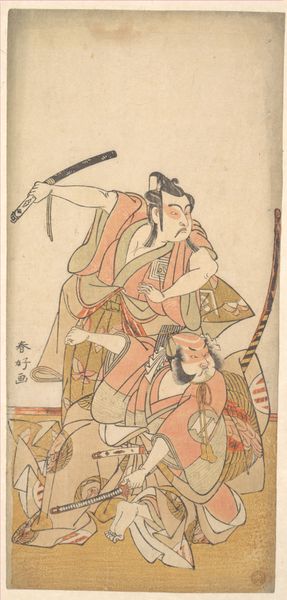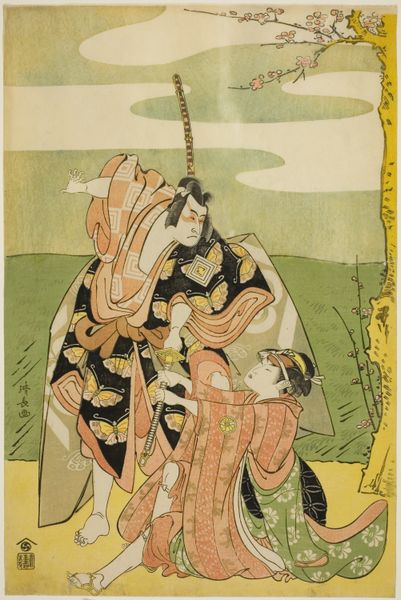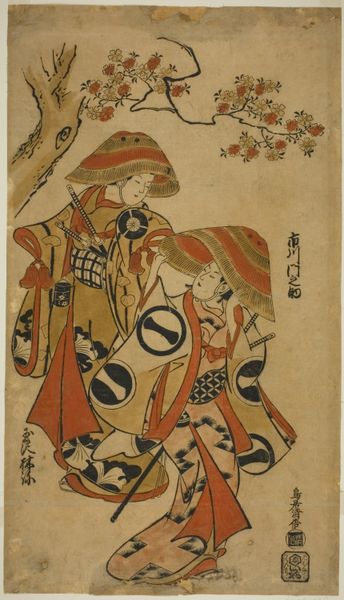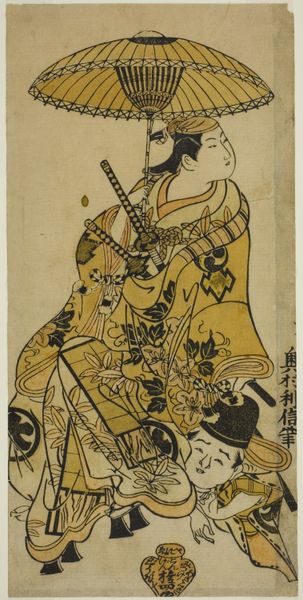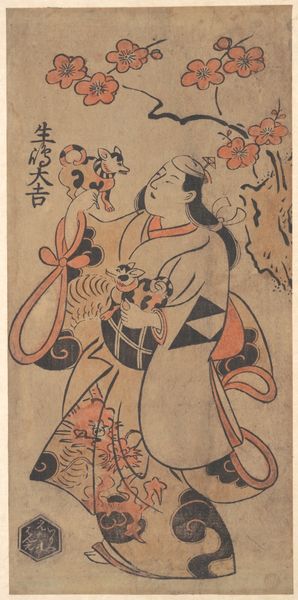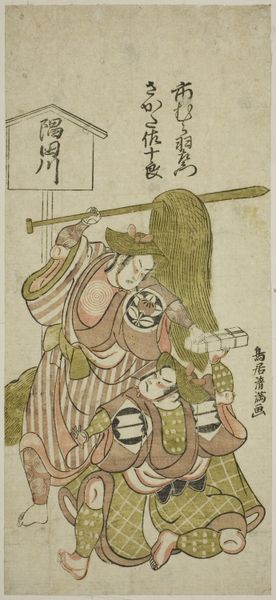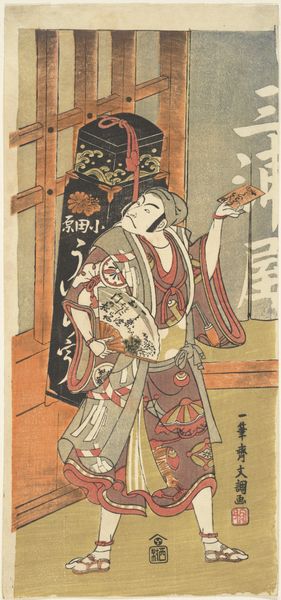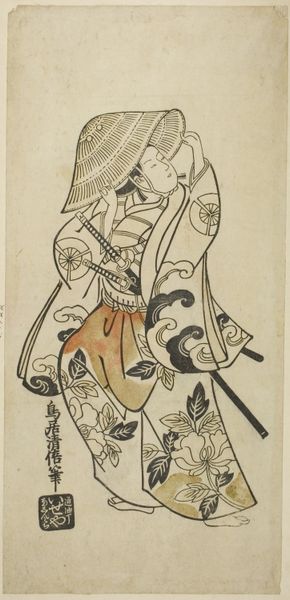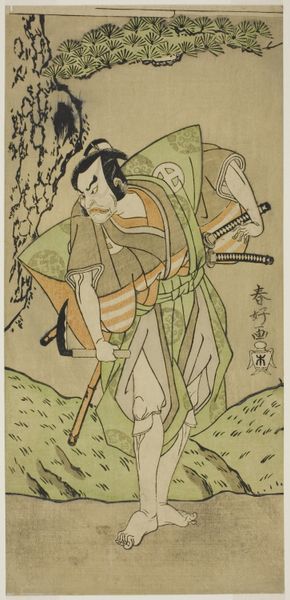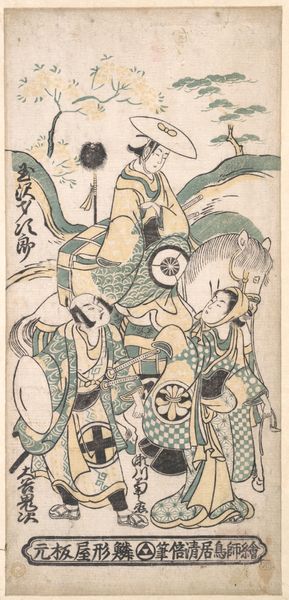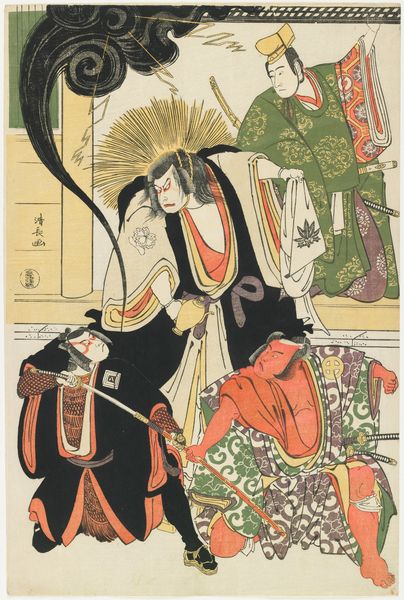
Ichikawa Monnosuke II as a Woman 1760 - 1780
0:00
0:00
print, woodcut
#
portrait
#
narrative-art
# print
#
asian-art
#
ukiyo-e
#
figuration
#
woodcut
Dimensions: H. 11 7/16 in. (29.1 cm); W. 5 3/4 in. (14.6 cm)
Copyright: Public Domain
Curator: Wow, there's a lot going on here, isn't there? The mood is almost theatrical, which makes sense considering the source. Editor: Absolutely. What grabs me first is that vibrant unease, that precarious balance between elegance and complete chaos. It's fascinating. Curator: This woodcut, "Ichikawa Monnosuke II as a Woman" by Ippitsusai Bunchō, created sometime between 1760 and 1780, captures the essence of Ukiyo-e and Kabuki theatre, these theatrical characters portrayed offstage are an essential symbol for the representation of Edo Japan itself. Editor: "As a Woman"... So we're looking at a male actor playing a female role. It adds another layer of performance, like a hall of mirrors reflecting societal expectations. I wonder, what statement is being made here about gender or the theater itself? Curator: It's definitely playing with performative identities. Kabuki was often censored, using female roles to make political statements. And don’t forget the use of flowers— cherry blossoms specifically—often function as a symbol for the fleeting nature of existence, like actors fading youth, like a government power. They speak to ideas of beauty, transience and also to the artist's reflection of cultural change. Editor: True, the transience of life but also of performance! A beautiful symbol, carefully displayed. And is that fear I see on the fallen actor’s face? It's beautifully captured, this moment of intense, internal conflict, almost painful to look at. But that is so often the role of the woodblock prints of that era; to reflect the inner emotions using art. Curator: And notice the contrasting textures: the smooth planes of the background versus the intricate patterns of the costumes. The materiality highlights the depth and artistic expertise the printmaker had at hand. But what does this tension contribute? Editor: Perhaps it speaks to the tension between public and private selves? The actor on stage, adorned in layers of identity, versus the vulnerability of the individual beneath the mask. Or, literally, to the material/ economic imbalance for many actors. Curator: Fascinating perspective. The piece really makes us contemplate the artifice inherent in representation. It brings questions to the foreground: "What do symbols mean to different people? How are feelings transmitted throughout time?" Editor: It definitely does, offering a powerful glimpse into both the beauty and the inherent tensions within the Ukiyo-e era itself. A beautifully uneasy dance.
Comments
No comments
Be the first to comment and join the conversation on the ultimate creative platform.
